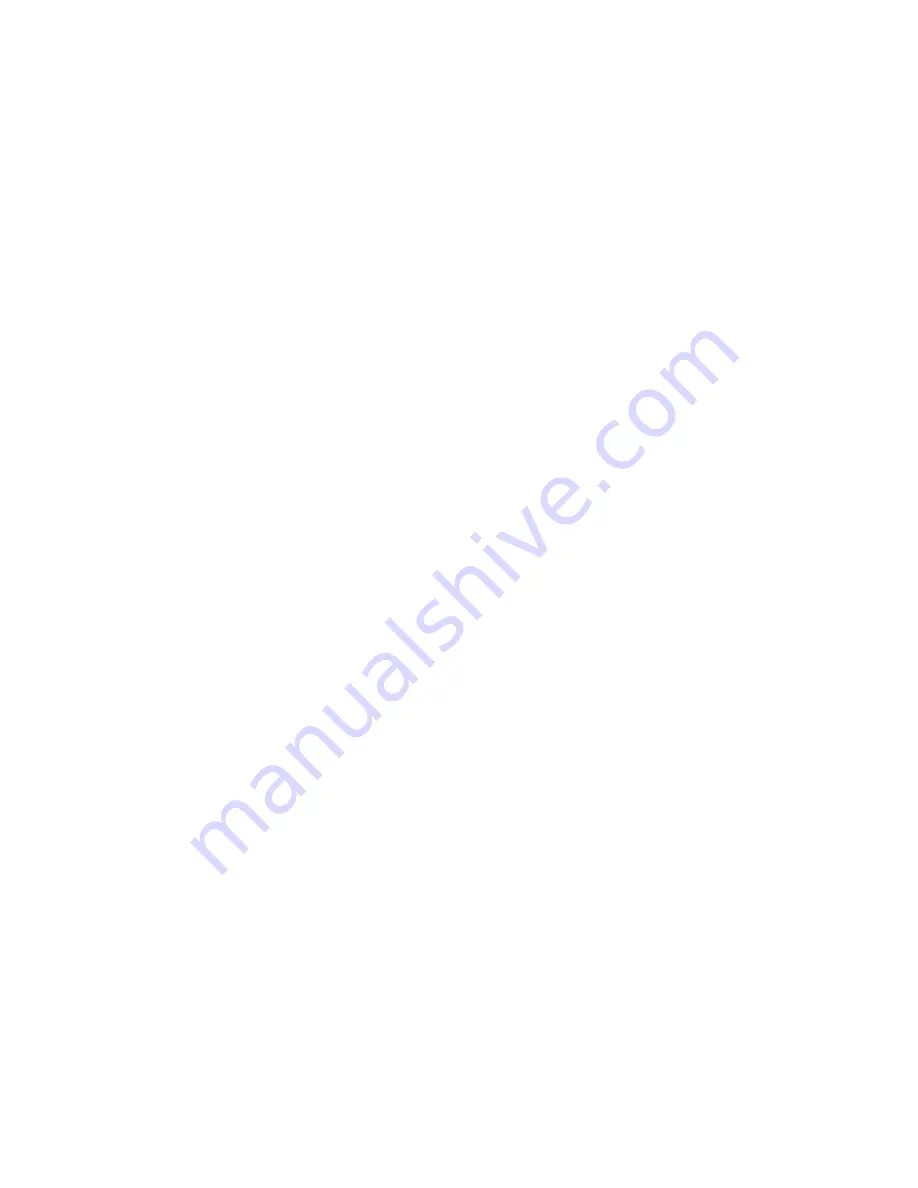
8-10 PCL Font Selection
EN
Pitch Command
The Pitch command designates the horizontal spacing of a
fixed- spaced (bitmap or scalable) font in terms of the number of
characters per inch. This characteristic is ignored when selecting a
proportionally-spaced (bitmap or scalable) font, but is saved in the
font select table and available when a fixed-spaced font is selected.
E
C
( s # H -
Primary pitch
E
C
) s # H -
Secondary pitch
# = # = Pitch in characters/inch
Default = 10
Range = 0.00
The value field (#) is valid to two decimal places.
If a pitch is specified that is not available, the next greater available
pitch is selected. If no greater value is available, the closest available
lesser value is selected.
The factory default primary and secondary pitches are ten characters
per inch.
The user default primary and secondary pitches are implicitly set by
selection of a users default font from the printer’s control panel (refer
to the printer User’s Manual).
The range of valid pitch selections for a fixed-spaced scalable font is
576 to .10 characters/inch, however, not all valid pitches are available,
since the pitch value is actually converted to a corresponding point
size (height) value which is scaled by the printer. The effective pitch
ranges are thus limited by height constraints.
The lower end of the pitch range is limited as a result of the font
height limitation of 999.75 points. For example, the smallest available
pitch for the internal Courier typeface would be about 0.12.
The upper end of the pitch range is similarly limited by the minimum
recommended font height of 4 points. For Courier, this translates to a
maximum recommended pitch of 30 (30 cpi), while for Letter Gothic
the maximum recommended pitch is 36. When requested pitch values
are outside of HP’s recommended limits, unsatisfactory results can
occur.
Summary of Contents for LaserJet 4100
Page 1: ...Part I Click here to access Part II on hp com ...
Page 2: ......
Page 26: ...Contents 14 EN ...
Page 44: ...2 10 The Page EN ...
Page 54: ...3 10 The Print Environment EN ...
Page 70: ...4 16 PCL Job Control Commands EN ...
Page 80: ...5 10 Page Control Commands EN Figure 5 3 Changing Print Direction on a Page ...
Page 82: ...5 12 Page Control Commands EN Figure 5 4 Text Area Within the Page ...
Page 110: ...6 16 Cursor Positioning EN ...
Page 120: ...7 10 Fonts EN Figure 7 11 Bitmap Character Figure 7 12 Scalable Character ...
Page 122: ...7 12 Fonts EN ...
Page 152: ...8 30 PCL Font Selection EN ...
Page 166: ...9 14 Font Management EN ...
Page 182: ...10 16 User Defined Symbol Sets EN ...
Page 237: ...EN Character Descriptor Formats 11 55 Figure 11 5 Class 2 Character Data ...
Page 240: ...11 58 Soft Font Creation EN Figure 11 6 Portrait Character Example ...
Page 241: ...EN Character Descriptor Formats 11 59 Figure 11 7 Landscape Character Example ...
Page 270: ...13 4 The PCL Print Model EN Figure 13 3 Effect of Transparency Modes on Images ...
Page 276: ...13 10 The PCL Print Model EN Figure 13 4 Shading Patterns ...
Page 277: ...EN Pattern ID Area Fill ID Command 13 11 Figure 13 5 Cross Hatch Patterns ...
Page 290: ...13 24 The PCL Print Model EN ...
Page 297: ...EN Pattern ID Area Fill ID Command 14 7 Figure 14 1 Shading Patterns ...
Page 298: ...14 8 PCL Rectangular Area Fill Graphics EN Figure 14 2 Cross hatch Patterns ...
Page 341: ...EN Raster Graphics Example 15 33 Figure 15 11Example of Raster Graphic Image Data ...
Page 342: ...15 34 Raster Graphics EN ...
Page 370: ...16 28 Status Readback EN ...
















































